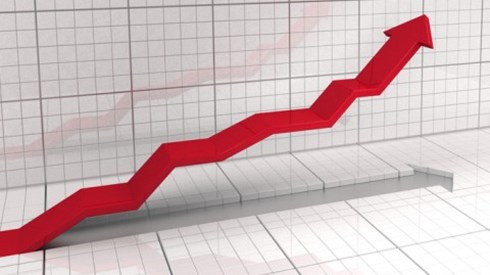Commercial Insurance Price Increases Held Steady at 4 Percent in Q1

May 01, 2023

Global commercial insurance prices increased 4 percent in the first quarter of 2023, the same percentage as in the fourth quarter of 2022, according to the Marsh Global Insurance Market Index.
This year's first quarter was the 22nd consecutive quarter in which composite commercial insurance prices increased, according to Marsh, continuing the longest run of increases since Marsh began the index in 2012. Price increases peaked at 22 percent in the fourth quarter of 2020, Marsh said.
Property insurance pricing increased by 10 percent in the first quarter, up from 7 percent in last year's fourth quarter, Marsh reported. In the United States, property prices increased 17 percent in the first 3 months of 2023, up from 11 percent during the final quarter of 2022.
At 5 percent in the first quarter, prices for financial and professional lines decreased for the third consecutive quarter, Marsh said.
Cyber-insurance price increases moderated again during this year's first quarter, to 11 percent from 28 percent the prior quarter, according to Marsh. Meanwhile, casualty insurance prices increased 3 percent.
By region, first-quarter composite price increases were 4 percent in the United States, 3 percent in the United Kingdom, 5 percent in Europe, 8 percent in Latin America and the Caribbean, 1 percent in Asia, and 7 percent in the Pacific region, Marsh found.
In the US commercial property insurance market, insurers remained concerned about inflation and valuations during the first quarter, Marsh said. Total insured values increased an average of 9 percent during the quarter.
"Insurers continued to restrict coverage terms for some clients as the bifurcation in renewal results continued," the Marsh report said. "Best-in-class" risks with limited natural catastrophe exposures and stable capacity from incumbent insurers typically experienced better results at renewal, the Marsh report said.
Higher commercial property increases in the United States were generally experienced by clients with losses and/or were predominantly located in high-hazard catastrophe zones such as the Gulf of Mexico, the Atlantic Coast, and California, Marsh said.
Secondary perils such as wildfire, inland flooding, and severe convective storms remained a focal point for commercial property insurers in the United States during the first quarter, the report said, with insurers limiting capacity of looking to increase deductibles.
"Insurers demonstrated rigor regarding terms and conditions, including CAT deductibles, non-physical damage, cyber, communicable disease exclusions, and time element extensions, Marsh said. "Capacity for named wind in the Southeast and earthquake in California were under particular scrutiny by underwriters."
In the US casualty market, prices increased 2 percent during this year's first quarter, up from a 1 percent increase during the prior quarter, the Marsh report said. Excluding workers compensation, the first-quarter increase was 3 percent, Marsh said.
The Marsh report noted that workers compensation has generally helped lower the average rate increases in the US market on auto and general liability when all lines are purchased together from the same insurer.
"Insurers are closely monitoring the impact of inflation, court systems reopening, the increased number of vehicles on the roads post-pandemic, and property market conditions," the Marsh report said. "Some insurers appeared to be considering pricing increases for auto liability."
US buyers saw excess liability prices increase 5 percent during the first quarter, according to Marsh, down from 6 percent during the fourth quarter of 2022. Insurers continue monitoring the severity of claims given recent large losses, Marsh said.
Prices for financial and professional lines coverage decreased 9 percent in the US market during the first quarter, compared to a 10 percent decrease a quarter earlier, Marsh said. Directors and officers (D&O) liability insurance prices for publicly traded companies continued to decline, the report said, falling by 13 percent in the first quarter, after a decline of 14 percent in the fourth quarter of 2022.
"Competition remained strong for both primary and excess coverage from both new insurers and legacy markets," the Marsh report said. "Some insurers demonstrated a willingness to insure other, more difficult to place coverage lines, such as property or cyber, in an effort to win layers on D&O programs."
US fiduciary insurance pricing was flat during this year's first quarter, according to Marsh.
In the US cyber-insurance market, cyber-insurance prices continued to moderate, with an 11 percent first quarter increase compared to a 28 percent increase in the fourth quarter of 2022, Marsh said. The broker attributed the moderating trend in part to new market entrants increasing cyber-insurance capacity. In addition, "Increased competition, improved cybersecurity controls, and a reduction in ransomware attacks in 2022 were key factors behind the continued improvement in pricing," Marsh said.
The report noted an uptick in ransomware events and claims since the fourth quarter of last year, however. "The first quarter also saw a large number of privacy claims reported under regulations including the Biometric Information Privacy Act (BIPA) and the Video Privacy Protection Act (VPPA), as well as ongoing concerns regarding web tracking codes," the Marsh report said.
The Marsh report also cited new war-exclusion wording in cyber policies mandated by Lloyd's of London to manage systemic loss. That mandate took effect March 31. "Marsh remains engaged in discussions regarding such exclusions," the report said.
May 01, 2023





